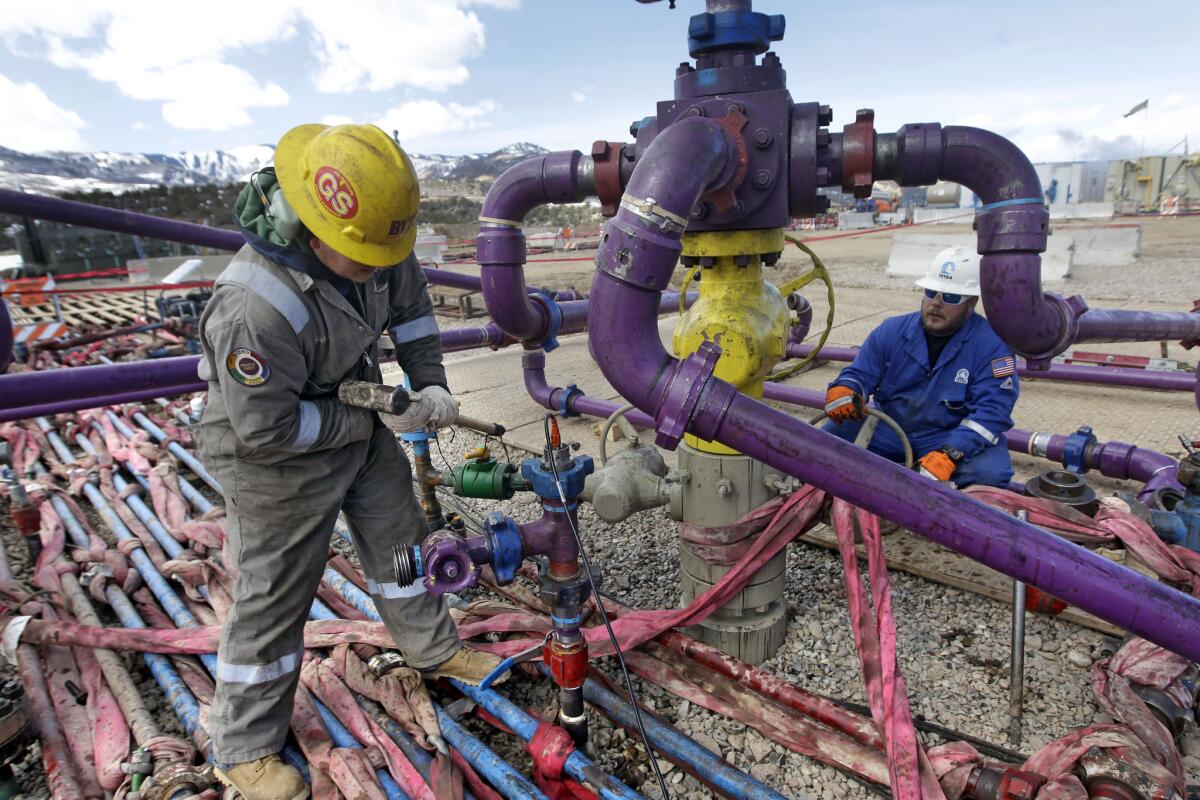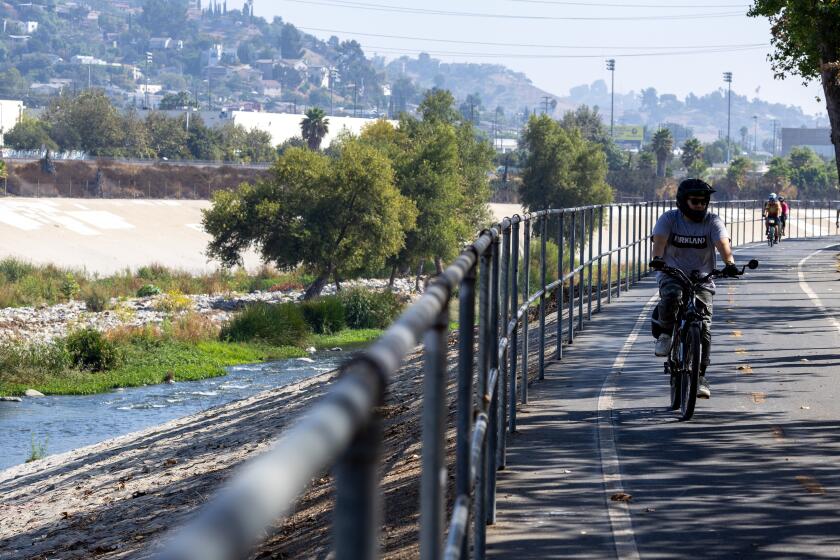Why such hysteria over fracking?

Is hydraulic fracturing — used for more than 60 years to produce oil and natural gas — safe?
The “safe fracking” question has been asked and answered many times over by government regulators, scientists and other technical experts, and they have concluded that hydraulic fracturing is a fundamentally safe technology. Interior secretaries and EPA heads have repeatedly said that fracking can be done, and is being done, so that it doesn’t present environmental or public health problems.
That’s been the case for decades, Interior Secretary Sally Jewell, a former petroleum engineer and a former president of REI, the outdoor equipment retailer, said in May. Jewell’s predecessor, Ken Salazar, testified to Congress that hydraulic fracturing “has been done safely hundreds of thousands of times” and warned lawmakers against anti-fracking “hysteria.”
POLL: Californians concerned about fracking
As far back as 1995, the Environmental Protection Agency studied whether hydraulic fracturing contaminated drinking water. The EPA studied a site in Alabama at the request of environmentalists and found “no evidence” of “any contamination or endangerment of underground sources of drinking water.” In 2004, the agency conducted a broader study and also found fracking “poses little or no threat” to water supplies.
In 2009, another study from the U.S. Department of Energy and the Ground Water Protection Council — an interstate body of environmental regulators — concluded that fracking is a “safe and effective” technology for producing energy from deep geological formations like California’s Monterey Shale.
More recently, Stanford University geophysicist Mark Zoback, who’s also served as an advisor to the Obama administration, confirmed that fluids used in hydraulic fracturing “have not contaminated any water supply,” and with more than a mile of rock separating deep shale formations and shallow drinking water aquifers, “it is very unlikely they could.” In California, it is worth noting, more than 80% of hydraulic fracturing occurs in parts of Kern County where there is no potable groundwater.
Anti-fracking forces respond to such good news by finding new ways to scare the public. That’s why you hear more and more allegations about air quality, water use and earthquakes. On air quality, they are ignoring that California’s oil and gas industry already operates under some of the world’s tightest emissions controls, and such controls have worked well in states where fracking and drilling are more widespread than in California.
For example, in Colorado, regulators have reported “decreases in the levels of many organic pollutants associated with oil and gas operations” during a dramatic rise in energy production. And in Texas in recent years, regulators responded to air quality fears in the Dallas-Fort Worth area with round-the-clock monitoring, and found “no levels of concern for any chemicals” and “no immediate health concerns from air quality.”
Next, activists exaggerate problems associated with water usage and wastewater disposal associated with hydraulic fracturing. In states where hydraulic fracturing is used much more frequently, and where many times as much water is used as in California, the process accounts for less than 1% of total water demand, according to the Department of Energy and the Groundwater Protection Council. In addition, wastewater can be treated and reused, minimizing both issues.
In California, we use much less water than other states because of our geology. For perspective, the amount of water used in all of the hydraulic fracturing jobs in California last year was about the same amount of water that the state’s golf courses consumed in half a day.
As for earthquakes, a yearlong study released in 2012, the first of its kind in the state, at the Inglewood Oil Field in the Baldwin Hills area found “no detectable effects on vibration” — and no water or air quality problems either — from hydraulic fracturing. Perhaps that’s because, as Zoback has explained, the amount of seismic energy released during hydraulic fracturing is about the same as “as a gallon of milk falling off a kitchen counter.” In fact, the National Research Council concluded last year that hydraulic fracturing does not pose a high risk of inducing earthquakes. The separate process of injecting oil and gas wastewater into deep disposal wells, while it does carry some risk, has never triggered an earthquake in California.
Despite the sound bipartisan defeat of legislation that would impose a moratorium on hydraulic fracturing, some activist groups are still pressing lawmakers to ban the technology. There is no reason to impose a moratorium or ban on a technology that is fundamentally safe, will lead to more jobs and economic growth and will reduce our dependence on foreign oil.
Regulators should continue to review the rules that apply to hydraulic fracturing, and find ways to improve them to ensure that the public has the information it needs about the process. The facts clearly show that this technology can be used safely while regulatory updates are made.
Rock Zierman is chief executive of the California Independent Petroleum Assn.
More to Read
A cure for the common opinion
Get thought-provoking perspectives with our weekly newsletter.
You may occasionally receive promotional content from the Los Angeles Times.










